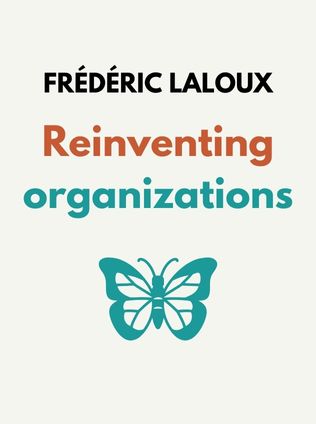
Reinventing Organizations
A Guide to Creating Organizations Inspired by the Next Stage of Human Consciousness
By Frédéric Laloux
Published 02/2014
About the Author
Frédéric Laloux is a visionary thinker and business consultant with a deep passion for understanding the evolution of organizational structures. His journey into the world of organizational development began with a desire to explore how companies could operate more effectively by aligning their structures with the evolving consciousness of their members. Laloux’s background in management consulting gave him firsthand insight into the limitations of traditional hierarchical organizations, where rigid structures often stifle creativity and individual growth.
Driven by a belief that there must be a better way to organize human enterprises, Laloux embarked on a comprehensive study of pioneering organizations that were breaking away from conventional norms. His research culminated in the publication of "Reinventing Organizations", a groundbreaking book that has since become a must-read for leaders and thinkers interested in the future of work. Laloux’s work is not just a theoretical exercise; it is a call to action for organizations to embrace new ways of thinking and operating that can unleash the full potential of their people.
Main Idea
At the heart of "Reinventing Organizations" is the idea that as human consciousness evolves, so too must our organizations. Laloux argues that traditional hierarchical structures, which have dominated the organizational landscape for centuries, are increasingly ill-suited to the complexities of the modern world. He proposes that we are on the brink of a new stage of organizational development, one that he calls the "Teal paradigm".
Teal organizations, according to Laloux, represent a radical departure from the command-and-control structures of the past. They are built on principles of self-management, wholeness, and an evolutionary purpose. In these organizations, power is distributed rather than centralized, employees are encouraged to bring their whole selves to work, and the organization’s purpose goes beyond profit to encompass a broader mission that aligns with the values and aspirations of its members.
Laloux’s vision is not just about making organizations more efficient; it is about creating environments where people can thrive, both personally and professionally. By aligning organizational structures with the evolving consciousness of their members, Laloux believes that we can create workplaces that are not only more effective but also more humane and fulfilling.
Table of Contents
- The Evolution of Organizational Structures
- The Characteristics of Teal Organizations
- Implementing Teal Practices
- The Future of Organizational Development
The Evolution of Organizational Structures
To understand the significance of the Teal paradigm, it is important to first trace the history of organizational development. Laloux uses a color-coded system to describe the different stages of organizational evolution:
Red Organizations
The earliest human organizations were characterized by power exercised through force. In these "Red organizations," leadership was typically held by a single powerful individual, and the structure was based on fear and control. These organizations were effective in environments of chaos and violence, where survival was the primary concern.
Amber Organizations
As human societies evolved, so did their organizations. "Amber organizations" are hierarchical and bureaucratic, with clearly defined roles and responsibilities. These structures emerged alongside the development of organized religion, government agencies, and the military. Amber organizations value stability, tradition, and control, and they function well in stable environments where adherence to rules and norms is critical.
Orange Organizations
The next stage in organizational development is represented by "Orange organizations." These are the modern corporations that prioritize innovation, competition, and efficiency. Orange organizations value meritocracy, where individuals are rewarded based on their performance and achievements. This stage is marked by a shift from hierarchical control to a focus on results and objectives, with an emphasis on scientific and technological advancements.
Orange organizations have been instrumental in driving the economic and technological progress that has shaped the modern world. However, Laloux argues that they also come with significant drawbacks, including a tendency toward overconsumption, environmental degradation, and a disconnect between individual fulfillment and organizational goals.
Green Organizations
In response to the shortcomings of Orange organizations, the next stage of development brought about the rise of "Green organizations." These organizations emphasize inclusivity, consensus, and a values-driven approach. Green organizations seek to break down traditional power structures by promoting a culture of empowerment and collaboration. Leadership in Green organizations is often seen as a service to the community, and decisions are made through a process of consensus-building.
While Green organizations have made significant strides in creating more humane and inclusive workplaces, Laloux points out that they often struggle with inefficiency and decision-making paralysis. The emphasis on consensus can lead to slow decision-making processes, and the lack of clear leadership can create challenges in times of crisis or rapid change.
Sign up for FREE and get access to 1,400+ books summaries.
You May Also Like
The Subtle Art of Not Giving a F*ck
A Counterintuitive Approach to Living a Good Life
By Mark MansonRich Dad Poor Dad
What the Rich Teach Their Kids About Money - That the Poor and Middle Class Do Not!
By Robert T. KiyosakiHow To Win Friends and Influence People
The All-Time Classic Manual Of People Skills
By Dale CarnegieQuiet: The Power of Introverts
The Power of Introverts in a World That Can't Stop Talking
By Susan Cain



















